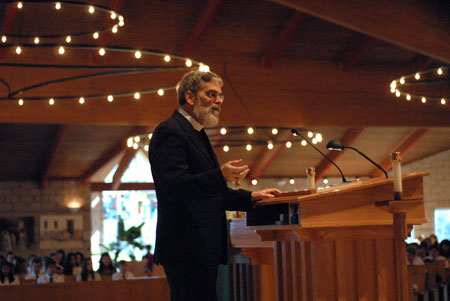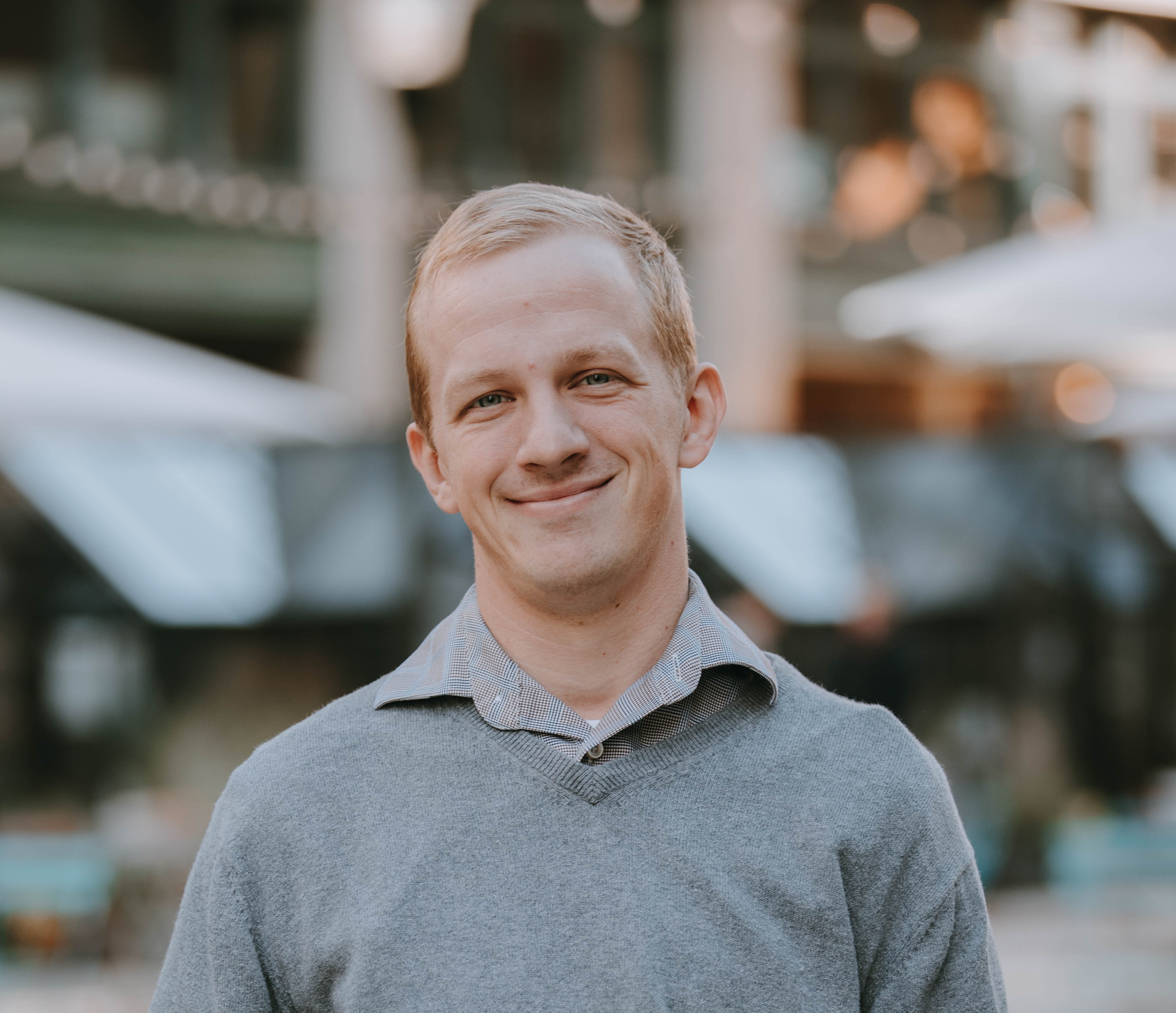 Jesuit Bro. Guy Consolmagno, a Detroit native who was named director of the Vatican Observatory by Pope Francis in September, speak to a group of students at St. Mary of the Hills Parish in Rochester Hills on Nov.19.
Jesuit Bro. Guy Consolmagno, a Detroit native who was named director of the Vatican Observatory by Pope Francis in September, speak to a group of students at St. Mary of the Hills Parish in Rochester Hills on Nov.19.Dan Meloy | The Michigan Catholic
Bloomfield Hills — It’s the question most often asked to the director of the Vatican Observatory: Why does the pope have a giant telescope?
“Why not?” replies Bro. Guy Consolmagno, SJ, who was named Sept. 18 by Pope Francis to head the observatory at Castel Gandolfo in Lazio, Italy.
Bro. Consolmagno, Detroit native and alum of University of Detroit Jesuit High School, spoke Nov. 18 at the Cranbrook Institute of Science about the important role the Catholic Church plays in the advancement of scientific curiosity.
In addition to managing the Holy Father’s telescope — he had lunch with his fellow Jesuit shortly after being named to the post — Bro. Consolmagno tours the country, giving talks about the compatibility between science and religion and the need to spread knowledge.
“The biggest reason we have an observatory; we do it to amaze you,” Bro. Consolmagno said. “We’re here to break the stereotypes about the Church and science. Tonight is about showing the world good science. Reminding people that science isn’t a big book of facts, it’s using all reasons and emotions to fit the data presented.”
Bro. Consolmagno’s curiosity started where most children’s curiosity starts, in his backyard.
“When I was a kid, on snowy days I would pretend my backyard was Antarctica, because it was the closest you could be to being on another world while still being on the planet,” Bro. Consolmagno told students of Holy Family Regional School the next day at St. Mary of the Hills Parish in Rochester Hills.
“I always had a curiosity from the stars; we are the only species that looks up to the stars, that’s what separates us from all the other animals on this Earth,” Bro. Consolmagno said.
After graduating from University of Detroit Jesuit in 1970, Bro. Consolmagno attended Boston College before transferring to the Massachusetts Institute of Technology, where he studied planetary science and astronomy. He graduated in 1975 from MIT with a master’s in planetary science and got his Ph.D. from the University of Arizona in 1978.
“I visited MIT because it had the biggest collection of science fiction, anywhere,” Bro. Consolmagno said. “Like any story, if it’s any good, it has a little truth in it. So much great science fiction inspired future scientists. If it’s a good story, it recognizes truth, that’s why art and movies motivate us, they contain truth.”
Bro. Consolmagno had the chance to teach truth to others when he left the scientific community to join the Peace Corps. After being sent to Africa, Bro. Consolmagno ended up doing the one thing he didn’t expect to do — teaching astronomy.
Bro. Consolmagno returned to the United States to teach at Lafayette College in Pennsylvania, but still wanted to serve a cause greater than himself, so he joined the Jesuits.
When he told his colleagues in the scientific community of his decision, they were supportive, he said. Bro. Consolmagno said any strain between science and religion played out in the media is completely false.
“There is not a war between science and religion in the scientific community; it’s simply not there,” Bro. Consolmagno said. “When I become a Jesuit, my fellows told me about all the churches they attended. The number of scientists who go to church is around the same amount of the general public. Even the ones who don’t go to church weren’t hostile toward me.”
Bro. Consolmagno has been interviewed by several people about his work and relationship between science and religion, including Stephen Colbert and Bill Maher, and he spends his time dispensing with the myth between the so-called conflict between faith and science.
“The way you see most science portrayed on TV is as false as you see the way most religion portrayed on TV,” Bro Consolmagno said. “It’s this false narrative that completely looks over the history of western science. Look at all the great scientists who were priests, all the great scientists who were Catholic.
“The Catholic Church invented science as we know it. So you need to look at where does the myth come from and who’s selling it.”
When not touring, Bro. Consolmagno is back in Italy, working on his research about asteroids — the “scrapheap of the solar system” — and how they might offer clues to the origins of planets.
Bro. Consolmagno and his team at the Vatican Observatory are studying a group of planets that are forming, testing their theories and trying to understand more about the early days of God’s creation.
“The more you know, the more questions you get, and life is all about pondering questions and finding answers to these questions,” Bro. Consolmagno said. “The Church invests in and supports science, because by knowing more about God’s creation, we know more about God.
“If you’re afraid of science, then you simply don’t have enough faith in your faith.”
While Bro. Consolmagno’s focus is on the heavens, the real-world application is the same as it was when he was a kid in his backyard in Detroit — curiosity.
“I do what I do, and the Church supports what I do, because it’s so important to feed that curiosity. Man does not live by bread alone; we’re always pondering why we’re here, how did we come to be,” Bro. Consolmagno said.
“But studying the universe, we get to know God the creator, know the universe that was created by Him and how it’s all beautiful. And from that, you get this sense of joy of discovery, this rush of emotion that drives you to do the science. And that’s where science and religion come together.”










